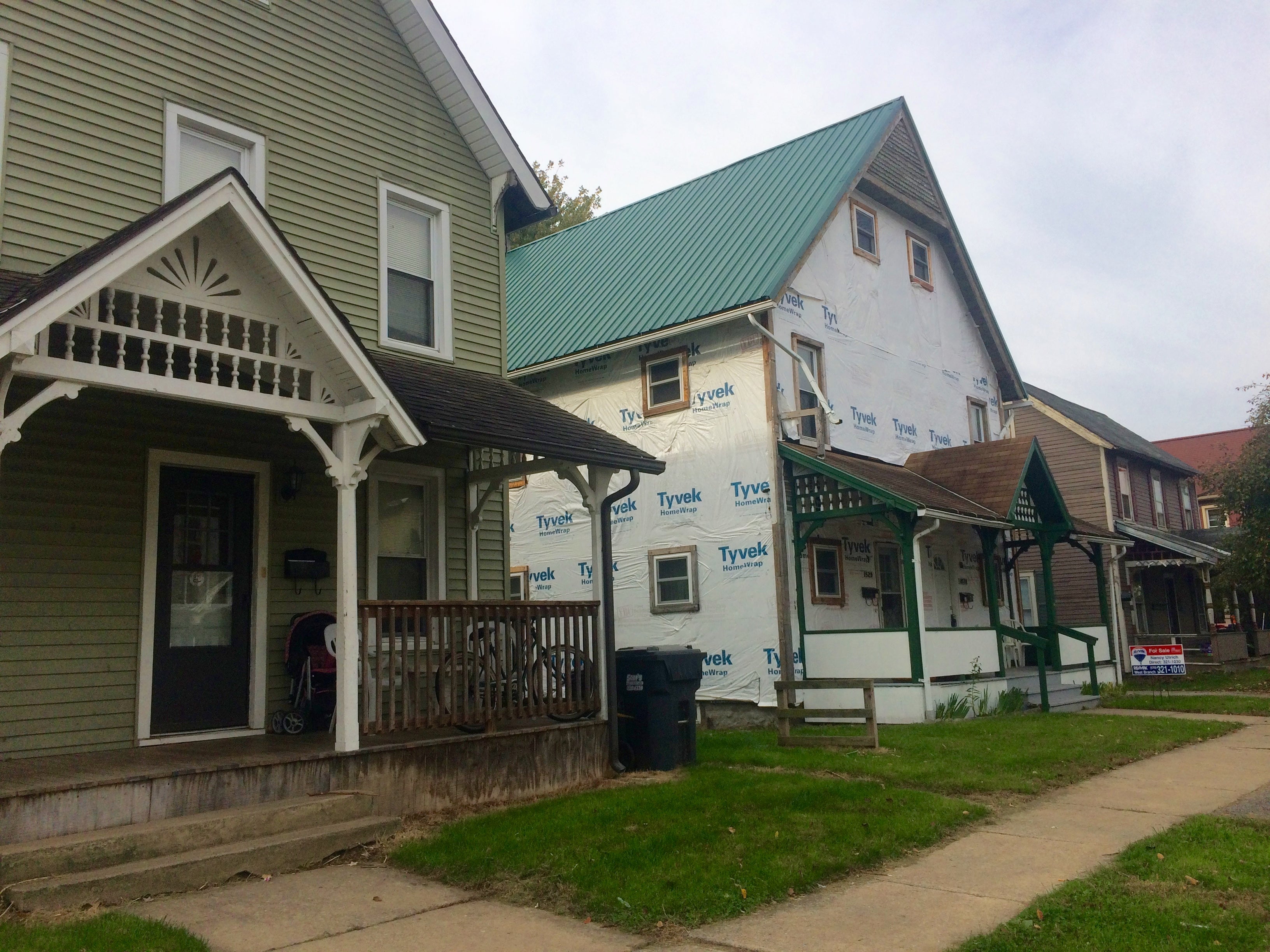Marcellus Shale housing assistance program expanded statewide

Older houses in Williamsport get upgraded with PHARE funding. (Eleanor Klibanoff/WPSU)
A real estate tax will be used to improve housing affordability and accessibility across the state.
The Pennsylvania Housing Affordability and Rehabilitation Enhancement (PHARE) fund is about to get a lot bigger. For the past four years, PHARE funds have been collected as part of the impact fee assessed on each gas well in the Marcellus Shale. Those funds, totaling $34 million over four years, have been distributed to counties in the Shale region to increase housing affordability and accessibility.
This month, the legislature voted to expand the sources and eligible recipients of PHARE funds. Shale funds will still go to the counties affected by gas drilling. But all 67 counties can apply for PHARE funding drawn from the realty transfer tax.
“The program has essentially been piloted for the last three years,” says Liz Hersh, of the Housing Alliance of Pennsylvania. “With the proven success of the program, people really saw the benefit to expand the impact statewide.”
Finding new funding
The Marcellus Shale fee was a new revenue source that didn’t require raising taxes or taking money from another program. This legislation finds a similar funding source in the realty transfer tax.
Right now, most of the realty transfer tax goes into the general state fund. After the market crash in 2008, income from that tax dropped significantly. Now that the housing market is starting to recover, more realty transfer taxes will be coming in. This legislation says that if the realty transfer tax earns more than it did in 2014-2015 fiscal year, 40 percent of that surplus will go to the PHARE fund.
“Because the money comes from the residential real estate market, it makes sense intuitively that it should go back into the residential real estate market,” says Hersh.
It will take some time to build the fund to its upper limit of $25 million a year. The Pennsylvania Housing Finance Agency, which distributes the funding, won’t even know how much money it has to distribute until next July. But whatever funds they do have will be given on the county level for locally coordinated projects.
“We expect demand to be much higher than we can meet right away,” says Bryce Maretzki of the PHFA. “But we encourage counties to start thinking now about how they might use these funds or plug these funds in as gap funding on existing projects.”
The plan isn’t flawless. The realty transfer tax, and thus the PHARE funding, is dependent on a strong real estate market. If the housing market were to collapse again, the funds would dry up right when counties needed them the most.
But Hersh says this was a case of not letting perfect be the enemy of good.
The realty transfer tax was a crowd-pleasing funding source, and the votes were proof: the bill passed the House unanimously in June. This week’s vote in the Senate saw only one nay.
“Here you have legislation where there is a significant investment of public resources, and you have a suburban Republican working with an urban Democrat and a rural Republican,” says Hersh. “It is possible to get the legislature to agree when [there is] a common vision of what the need is, the solution makes sense and is proven to have an impact on the problem.”
The program expects to start distributing funds as early as 2017.
WHYY is your source for fact-based, in-depth journalism and information. As a nonprofit organization, we rely on financial support from readers like you. Please give today.


